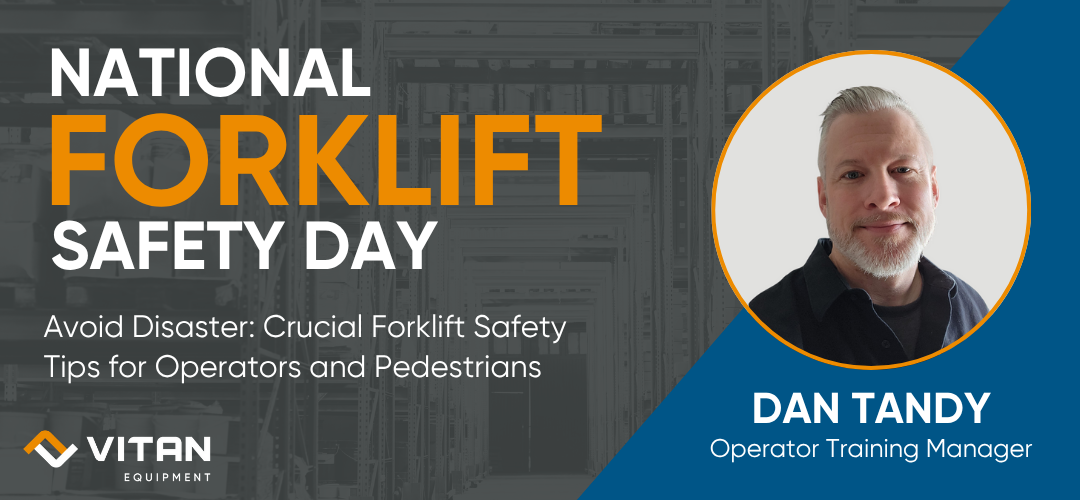
News
Avoid Disaster: Crucial Forklift Safety Tips for Operators and Pedestrians

Forklift safety is important for the wellbeing of operators and pedestrians. While common sense is a must as you actively operate lift equipment or walk through a warehouse, a lot of forklift safety best practices may not come naturally.
To help keep forklift operator and warehouse pedestrian best practices top of mind, our forklift Operator Training Manager, Dan Tandy, has compiled some of his top tips so you can stay safe in any warehouse setting.
Forklift Operator Safety Tips
-
Driving in Reverse
According to the Occupational Safety and Health Association (OSHA), approximately 70 percent of all forklift incidents in the United States could be avoided with proper safety training and policy. A common mistake made by forklift operators is not looking in the direction of travel when driving in reverse.
-
Driving with Forks
When driving a forklift, it’s important to keep the forks at a safe height off the ground. It is encouraged by safety experts to keep them between 2 – 6 inches and tilted slightly back. This height reduces the potential for seriously injuring any pedestrians in the upper leg or torso. Also, always remember to activate the horn when heading towards people so that they hear you coming.
-
Parking with Forks
Forks should always be in the tilted downward position when parked. The best way to achieve this is for the operator to tilt them forward before lowering them to the ground. Lowering to the ground then tilting forward puts stress on the mast pulleys and hoses when raised by the next driver. This can cause damage to your forklift over time.
-
Rear Steering
Rear wheel steering is crucial for forklifts to navigate tight aisles in warehouses; however, when turning, rear-end swing requires 5-10 feet of clearance to ensure pedestrians, racking and shelving, and other warehouse objects are safe from impact.
Warehouse Pedestrian Safety Tips
While not all of us in the material handling industry are forklift operators, we may be pedestrians in a warehouse at one time or another, and it’s important for us to always pay close attention to our surroundings, so we keep ourselves and others safe.
-
Using the Pedestrian Door
In many warehouses, there are bay doors and roll-up doors. It may feel natural to walk through those as a pedestrian, but those doors are designed for equipment traffic. Next to every roll-up door, there should be a pedestrian door. It’s important to build the habit of using pedestrian doors, to avoid being hit by moving material handling equipment.
-
Crossing in Front of a Forklift
As pedestrians, we can become complacent in assuming forklift operators will yield to us. It’s our responsibility to make sure we take precautions, just as operators are expected to take. When crossing in front of a forklift, do not assume you can cross and will be yielded to. Instead, be sure to make eye contact with the operator and wait for their signal before crossing.
Forklift Safety is No Accident
Complacency often leads to accidents and even tragedy in warehouses. Forklift operator and warehouse pedestrian safety is critical in maintaining a secure and efficient workplace. Clear communication, and adherence to safety guidelines help mitigate these risks.
Proper training for operators, designated walkways for pedestrians, and visible safety signage are all necessary measures to prevent collisions and ensure the well-being of everyone on the warehouse floor. Prioritizing safety not only protects lives but also enhances productivity and reduces downtime from avoidable incidents.
If you are interested in forklift operator safety certification or know someone who could benefit from training, get in touch with our team today!